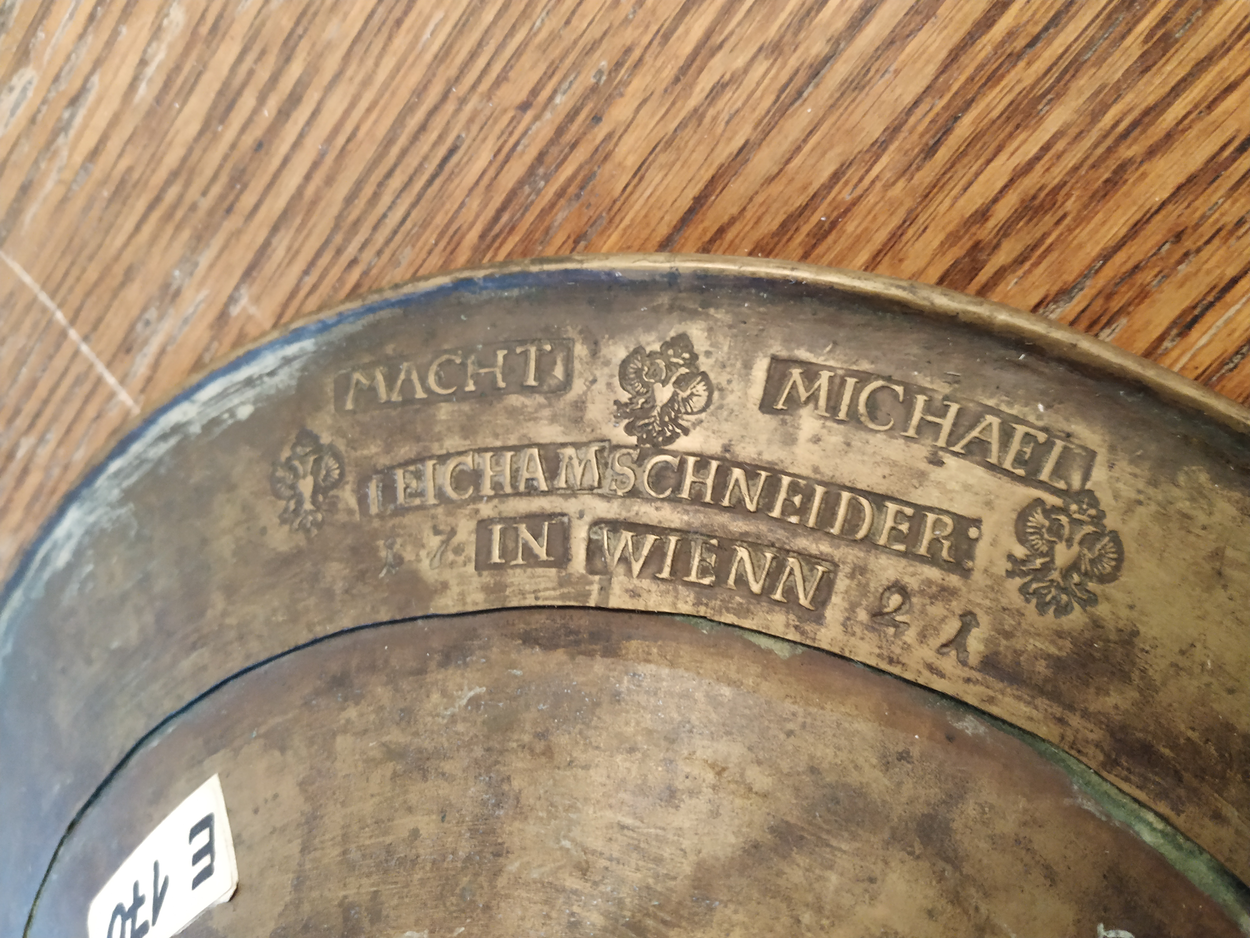Last but not least, I had the privilege to hold in my hands, still from the Jevisovice collection, a horn made by Leichamschneider in 1721 (inventory number E170).
As for the 1795 Haltenhof and the 1810 Kerner, this horn takes us somewhat out of subject since it is way too early for Mozart, but it can be used as a clue for more understanding.
This Leichamschneider is a fixed-pitch in G, unfortunately unplayable. We are now much closer to what we can see in horn iconography. I was extremely surprised by how heavy it was !
As expected, one could immediately see that hand technique was absolutely impossible on this horn due to the angle of the bell (see picture below, where I am having to badly twist my arm and shoulder). On the contrary, the long neck of the bell (and trace of use there) made it obvious that it was to be played bell up, like - again - what has been seen in the iconography.
From these observations we can deduce the following :
- The hypothesis exposed in the conclusion of the historical investigation that Leutgeb may have played such a Leichamschneider and then had it transformed, is no longer valid since the hand-technique is not possible on it (although the angle could be changed by cutting the lead-pipe, but the neck of the bell is still very long). If Leutgeb started his career on such a horn, he most certainly changed instruments by the time Mozart wrote for him.
- The similarities between the bells makes the 1760 Kerner closer to the Leichamschneider in terms of bell / hand technique development (as discussed earlier with the 1810 Kerner). In other words, the bell of the 1760 Kerner is still an early bell from the first half of the century. This somewhat confirms the idea that the ideal horn (bell size) stands somewhere in-between the two Kerner horns.






